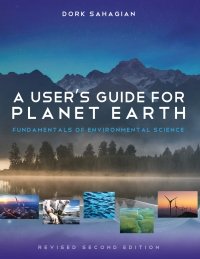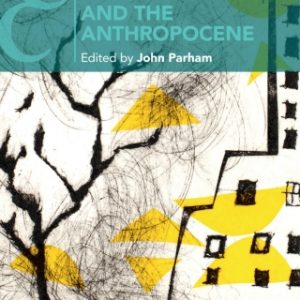Buy A User’s Guide for Planet Earth 2nd Edition PDF ebook by author Sahagian, Dork – published by Cognella Academic Publishing in 2021 and save up to 80% compared to the print version of this textbook. With PDF version of this textbook, not only save you money, you can also highlight, add text, underline add post-it notes, bookmarks to pages, instantly search for the major terms or chapter titles, etc.
You can search our site for other versions of the A User’s Guide for Planet Earth 2nd Edition PDF ebook. You can also search for others PDF ebooks from publisher Cognella Academic Publishing, as well as from your favorite authors. We have thousands of online textbooks and course materials (mostly in PDF) that you can download immediately after purchase.
Note: e-textBooks do not come with access codes, CDs/DVDs, workbooks, and other supplemental items.
eBook Details:
Full title: A User’s Guide for Planet Earth 2nd Edition
Edition: 2nd
Copyright year: 2021
Publisher: Cognella Academic Publishing
Author: Sahagian, Dork
ISBN: 9781793518514, 9783030509309
Format: PDF
Description of A User’s Guide for Planet Earth 2nd Edition:
This book provides a comprehensive, up-to-date assessment of the key terrestrial components of the Arctic system, i.e., its hydrology, permafrost, and ecology, drawing on the latest research results from across the circumpolar regions. The Arctic is an integrated system, the elements of which are closely linked by the atmosphere, ocean, and land. Using an integrated system approach, the book’s 30 chapters, written by a diverse team of leading scholars, carefully examine Arctic climate variability/change, large river hydrology, lakes and wetlands, snow cover and ice processes, permafrost characteristics, vegetation/landscape changes, and the future trajectory of Arctic system evolution. The discussions cover the fundamental features of and processes in the Arctic system, with a special focus on critical knowledge gaps, i.e., the interactions and feedbacks between water, permafrost, and ecosystem, such as snow pack and permafrost changes and their impacts on basin hydrology and ecology, river flow, geochemistry, and energy fluxes to the Arctic Ocean, and the structure and function of the Arctic ecosystem in response to past/future changes in climate, hydrology, and permafrost conditions. Given its scope, the book offers a valuable resource for researchers, graduate students, environmentalists, managers, and administrators who are concerned with the northern environment and resources.





